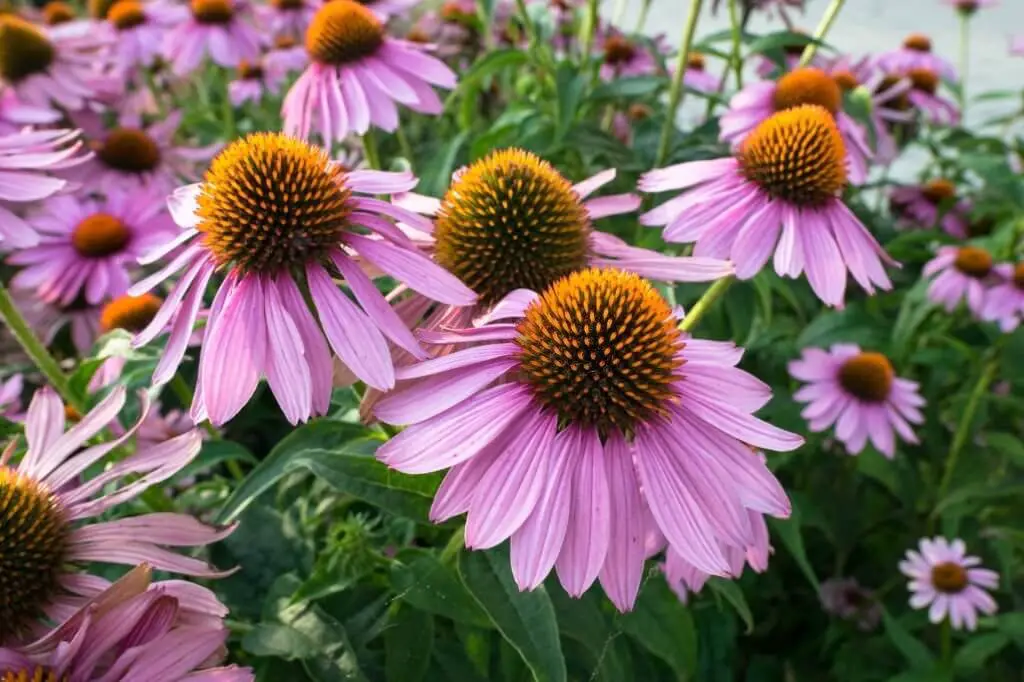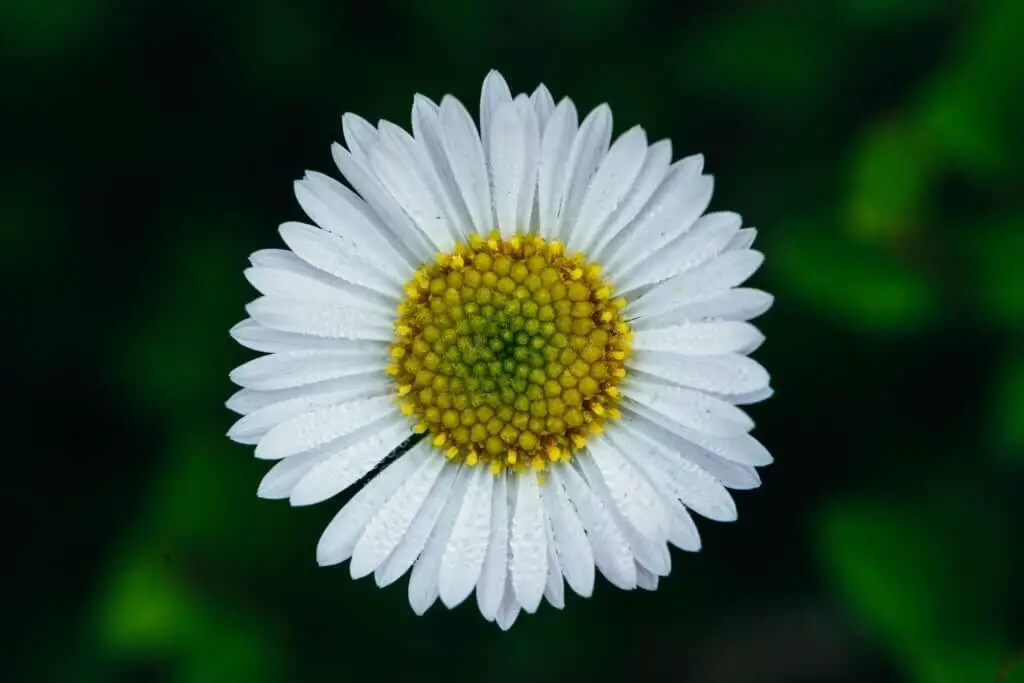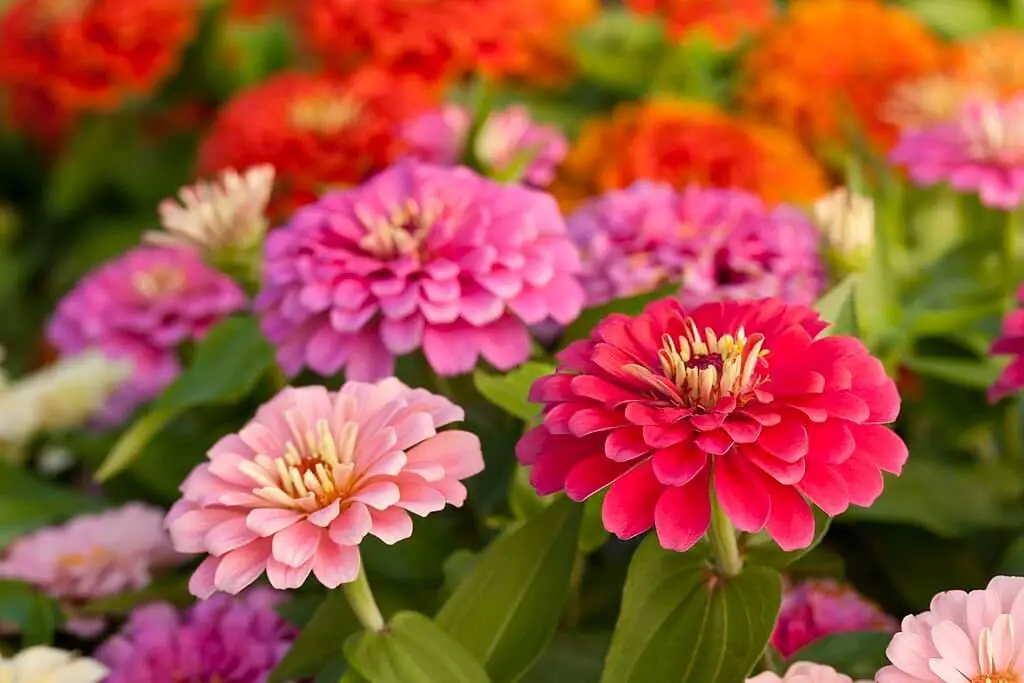Sunflower-Inspired Flowers: 19 Flowers That Look Like Sunflowers
Looking for ways to bring some sunshine into your life? You can’t go wrong with flowers that evoke the warmth and happiness of sunflowers! Not only do they come in a range of vibrant colors, but they also have unique shapes and sizes that can add a touch of whimsy to any space. In this article, we’ll take you on a journey through some of the best flowers that capture the essence of sunflowers. From bright yellows to fiery oranges, rich purples to deep reds, we’ve got you covered.
Whether you’re looking for a pop of color or a bouquet that’s as cheerful as a sunny day, these flowers are sure to bring a smile to your face. Related:25+ Different Types Of SunflowersIn this articleToggleYellow flowers like sunflowers:1. Black-Eyed Susans (Rudbeckia hirta) – a classic choice with its bright yellow petals and dark center.2. False Sunflower (Heliopsis helianthoides) – a daisy-like flower with a sunny disposition.3.
Golden Tickseed (Plains coreopsis) – a delicate, yellow bloom that’s perfect for adding a touch of elegance to any arrangement.4. Yellow Coneflower (Echinacea paradox) – a statuesque flower with a bold, bright yellow hue.5. Japanese sunflower (Tithonia diversifolia) – a unique, sun-kissed bloom with a hint of orange. Orange flowers like sunflowers:6. African Marigold (Tagetes erecta) – a vibrant, orange-petaled flower that’s sure to turn heads.7.
Calendula ‘Orange King’ (Calendula officinalis ‘Orange King’) – a bright, sunny bloom with a regal bearing. Purple flowers like sunflowers:8. Fall Aster (Symphyotrichum cordifolium) – a delicate, purple flower that’s perfect for adding a touch of autumn charm to any arrangement.9. Purple Coneflower (Echinacea purpurea) – a statuesque flower with a rich, royal purple hue.10. Swan River Daisy (Brachyscome iberidifolia) – a dainty, purple bloom with a delicate charm. Red flowers like sunflowers:11.
Mexican sunflower (Tithonia diversifolia) – a vibrant, red-petaled flower that’s sure to add a pop of color to any arrangement.12. Transvaal Daisy (Gerbera jamesonii) – a bright, red bloom with a cheerful disposition. White flowers like sunflowers:13. Mexican Daisy (Erigeron karvinskianus) – a delicate, white bloom with a subtle charm.14. Oxeye Daisy (Leucanthemum vulgare) – a daisy-like flower with a bright, sunny disposition. Other flowers that look like sunflowers:15.
Bush Daisy (Euryops pectinatus) – a unique, yellow-petaled flower that’s perfect for adding a touch of whimsy to any arrangement.16. Zinnia – a classic choice with its bold, colorful blooms.17. Carnation (Dianthus caryophyllus) – a timeless favorite with its delicate, ruffled petals.18. Florist’s Daisy (Chrysanthemum × morifolium) – a statuesque flower with a bright, sunny disposition.19. Blanket flowers (Gaillardia) – a bold, colorful bloom that’s sure to add a pop of color to any arrangement.
FAQs:What looks like a sunflower seed? Are zinnias related to sunflowers? Is Rudbeckia related to sunflowers? ConclusionRelated Posts
Yellow flowers that look like sunflowers.
These vibrant blooms boast large, radiant yellow petals and an equally striking golden center. Their striking appearance is sure to evoke feelings of warmth and joy, transporting you to idyllic summer afternoons spent basking in the sunshine.
Black-Eyed Susans (Rudbeckia hirta).

Native to North America, the stunning Black-Eyed Susans belong to the aster family. Characterized by their striking appearance featuring a black center surrounded by bright yellow petals, they’re often mistaken for sunflowers due to this unique combination. The flowers of these annuals bloom from early summer to fall, and as such, they thrive in environments with full sun to partial shade conditions.
Moreover, Black-Eyed Susans are remarkably low-maintenance, making them an excellent choice for gardeners of all levels, and their versatility allows them to seamlessly blend into any outdoor setting.
False Sunflower (Heliopsis helianthoides).

Native to North America, the false sunflower thrives in diverse environments, including woodlands, prairies, and meadows. Reaching heights of up to six feet, this tall plant boasts vibrant yellow blooms that echo the majesty of their sunflower counterparts. What’s more, false sunflowers are remarkably resilient, capable of thriving on a wide range of soil types. As such, they make an excellent addition to any garden, bringing with them a splash of color and visual interest to your landscape.
Golden Tickseed (Plains coreopsis).

In the vast expanse of the American plains and prairies, a vibrant wildflower species thrives, its bright yellow blooms reminiscent of sunflowers. This daisy-like flower grows up to two feet tall, supported by slender stems adorned with lance-shaped leaves.
As mid-summer gives way to early fall, the flowers burst forth in a colorful display, attracting a variety of pollinators like bees and butterflies.
Moreover, this adaptable plant has evolved to withstand drought conditions, making it an excellent choice for gardeners seeking low-maintenance beauty that still adds a pop of color to their landscape.
Yellow Coneflower (Echinacea paradox).

For those seeking a bright and cheerful yellow bloom reminiscent of a sunflower, look no further than this delightful specimen! Its unique cone-shaped center gives rise to its name, while the long, drooping petals add a touch of whimsy. When it comes to growing conditions, this flower thrives in full sunlight and well-drained soil. Interestingly, it’s native to the prairies of the United States and is a proud member of the daisy family.
Japanese sunflower (Tithonia diversifolia).

While originating in Mexico and Central America, the plant has been successfully introduced to other regions, including Japan, Africa, and the Mediterranean. This introduction is likely due to its striking resemblance to sunflowers, with bright yellow blooms that have captured the hearts of gardeners worldwide. The Japanese variety, in particular, is prized for its vibrant flowers and ability to thrive in a range of conditions.
Reaching a height of approximately three feet, this compact plant produces an abundance of blooms throughout the summer and fall seasons.
Orange flowers that look like sunflowers.
African Marigold (Tagetes erecta).

The vibrant African Marigold stands out with its striking orange sunflower-like blooms, thriving in a wide range of environments. Native to Mexico and Central America, this resilient plant has adapted to poor soils and scorching hot conditions, making it a popular choice for gardens worldwide. Its impressive hardiness extends to resisting numerous pests and diseases, further solidifying its reputation as an ideal ornamental.
Beyond its aesthetic appeal, the African Marigold holds cultural significance in various religious ceremonies and celebrations, where its potent fragrance is believed to ward off negative energies. For the novice gardener, the African Marigold is surprisingly easy to cultivate from seed, requiring only well-drained soil and full sun exposure.
As the plants reach maturity, they will burst forth with blooms from late summer to fall, encouraging repeat performances through the simple practice of deadheading spent flowers. With potential heights reaching up to four feet, these statuesque plants may require staking if their stems begin to lean, ensuring a stable display of their radiant beauty.
Calendula ‘Orange King’ (Calendula officinalis ‘Orange King’).

For gardeners seeking an orange flower with sunflower-like charm, the Orange King variety is an excellent choice. Its large, showy blooms on long stems make it perfect for cutting and adding to bouquets, while its nectar-rich flowers also attract bees and butterflies to your garden. Calendula ‘Orange King’ is a member of the Asteraceae family, native to Europe, and was introduced to America in the early 1800s, becoming a popular garden flower since then.
To thrive, this variety requires full sun and well-drained soil, tolerating drought once established. Its blooming period spans from summer to fall. For optimal flowering, deadhead spent blooms by cutting stems back to a leaf node, encouraging more flowers to bloom. If you wish to save seeds, wait until the flower heads dry before removing and storing them in a cool, dry place for spring use.
Purple flowers that look like sunflowers.
The instant I lay eyes on those stunning blooms, I’m struck by their undeniable charm. Their presence has a profound effect on my mood, imbuing it with a sense of joy and uplift that can’t be replicated.
Fall Aster (Symphyotrichum cordifolium).

A member of the esteemed sunflower family, this perennial flower boasts a statuesque presence, reaching heights of two to four feet tall. Its crowning glory is a profusion of deep purple blooms, reminiscent of miniature sunflowers. These radiant flowers burst forth in late summer and early fall, drawing an array of pollinators including bees, butterflies, and birds. Native to North America, this charming flora can be spotted thriving in open woods, meadows, and fields.
To coax the best from your fall aster, provide it with full sun to partial shade in well-drained soil. Additionally, make sure to deadhead spent blooms to encourage continued flowering.
Purple Coneflower (Echinacea purpurea).

The Eastern purple coneflower, also known as Echinacea purpurea, is a daisy family member native to North America. Its natural range spans USDA hardiness zones three through nine. Notably, this flower thrives in full sun to partial shade and can survive dry conditions, making it an ideal choice for water-conscious gardeners. A prolific bloomer, purple coneflowers produce flowers from early summer until frost, attracting a variety of pollinators like butterflies, bees, and birds.
Furthermore, the edible blooms can be incorporated into salads or used as a decorative garnish. With its low maintenance requirements and stunning appearance, the Purple Coneflower is an effortless addition to any garden, offering a unique alternative to traditional sunflowers in a rich purple hue.
Swan River Daisy (Brachyscome iberidifolia).

Within the daisy family, a charming floral gem has made its mark on the world. The Swan River Daisy, native to Australia, has spread its petals to other corners of the globe, including New Zealand, where it’s become a staple in many gardens.
Its vibrant blooms often burst forth in hues of purple, but they can also be found in softer shades of white and pink. A bright yellow center adds a touch of warmth to each flower, evoking miniature sunflowers that bring joy to any outdoor space.
With their ease of cultivation, Swan River Daisies make for an excellent addition to even the most discerning garden, offering a sweet and subtle charm that’s hard to resist.
Red flowers that look like sunflowers.
The undeniable allure of these creations stems from their ability to evoke a sense of joy and contentment within me. Their visual appeal is merely the starting point, as it’s their capacity to bring a smile to my face that truly resonates with me.
Mexican sunflower (Tithonia diversifolia).

A species of flowering plant belonging to the daisy family, Mexican sunflower is native to Mexico and Central America. Its naturalized presence can be found in parts of the southeastern United States, where it’s often cultivated as an ornamental plant due to its unique characteristics. Typically reaching a height of 6 feet, this plant boasts striking orange-red flowers that resemble small sunflowers and features green leaves with toothed margins.
Transvaal Daisy (Gerbera jamesonii).

In the vast expanse of South Africa, one species stands out for its vibrant beauty – the Transvaal daisy. Belonging to the Asteraceae family, this flowering plant has earned its name from its native province, Transvaal. A striking feature of the Transvaal daisy is its showy flowers, typically a deep red hue with bright yellow centers. These stunning blooms are borne on long stems that can reach up to 12 inches in diameter, making them a popular choice for bouquets and floral arrangements.
What’s more, the Transvaal daisy is not part of the same family as the common sunflower (Helianthus annuus), setting it apart from its botanical cousins.
White flowers that look like sunflowers.
While sunflowers are instantly recognizable due to their bright yellow petals and dark centers, there are indeed other white flower varieties that share similar characteristics. These alternatives often feature delicate white petals and dark or contrasting centers, giving them a sunflower-like appearance. Some of the most popular examples include…
Mexican Daisy (Erigeron karvinskianus).

The Mexican Daisy may not be a sunflower, but its resemblance is undeniable. Native to Mexico, this perennial flower can also be found in Central and South America, belonging to the Aster family with the scientific name Erigeron karvinskianus. Commonly known as Santa Barbara Daisy, Fleabane, or Karvinskian Fleabane, this charming bloom boasts a plethora of nicknames.
Standing at approximately 12 inches tall, the Mexican Daisy features small white flowers adorned with yellow centers that flourish from spring to fall. Its lance-shaped leaves are a vibrant green hue. With its adaptability and ease of growth, this flower is an ideal choice for novice gardeners. While it thrives in full sun, it can tolerate some shade. This drought-tolerant plant is not fussy about soil type, even thriving in poor, sandy conditions.
Once established, it requires minimal watering.
Oxeye Daisy (Leucanthemum vulgare).

Oxeye Daisy, a charming white bloom belonging to the Asteraceae family, originates from Europe. Reaching heights of 30-100 centimeters, this delightful flower exhibits daisy-like appearances with bright yellow centers. A favored selection for gardeners and florists alike, Oxeye Daisy is equally impressive when cut and presented in floral arrangements.
Other flowers that look like sunflowers
Bush Daisy (Euryops pectinatus).

The bush daisy, a member of the daisy family, showcases its vibrant yellow blooms with brownish centers during late spring and early summer. Measuring around three feet in height, this plant boasts deep green, lance-shaped leaves that provide a striking contrast to its bright flowers. The ray florets gradually curl back as they mature, adding an extra layer of charm to the already captivating appearance.
Native to South Africa, the bush daisy has been introduced to other parts of the world, including the United States, where it is a sought-after plant for gardens and floral arrangements. Its ease of cultivation, ability to thrive in poor soil conditions, and tolerance for full sun or partial shade make it an attractive choice for many gardeners.
Additionally, this drought-tolerant plant requires minimal watering once established, making it a low-maintenance yet high-reward addition to any outdoor space.
Zinnia.

Zinnias are often associated with warmth and joy, making them an excellent choice for adding a pop of sunshine to your indoor space. As one of the best annuals for cutting, these vibrant flowers bring the essence of summertime into your home. With their stunning array of colors, including yellow, orange, pink, red, white, and purple, it’s no wonder why zinnias are a favorite among florists and gardeners alike.
Their impressive blooms can reach up to six inches across, making them a show-stopping addition to any arrangement.
Carnation (Dianthus caryophyllus).

The Dianthus family, which comprises sweet william and pinks alongside the popular carnation, boasts an impressive array of colors. From white and pink hues to bold reds, vibrant yellows, and rich purples, carnations offer a kaleidoscope of options for garden enthusiasts. Optimal growing conditions for these flowers involve full sun to partial shade and well-drained soil, allowing them to thrive in a variety of environments.
Interestingly, while most carnation varieties are annuals, some are perennials, offering a unique opportunity for repeat blooms. The iconic red carnation is particularly noteworthy, not only as a popular choice but also as the official flower of Mother’s Day. With their versatility and stunning appearance, carnations can be seamlessly integrated into an array of floral arrangements, ranging from understated bouquets to elaborate centerpieces.
Florist’s Daisy (Chrysanthemum × morifolium).

The Florist’s Daisy, a charming bloom within the chrysanthemum family, boasts vibrant yellow petals that can instantly brighten up any space. Its endearing qualities make it an excellent gift for those who appreciate flowers. As an annual plant, its lifespan is limited to one growing season; however, with proper care, you can enjoy these flowers for many years. To cultivate your own Florist’s Daisy, begin by identifying a spot in your garden that receives ample sunlight.
Once found, dig a hole twice as wide as the pot your daisy currently resides in. Gently transfer the daisy to its new home, filling the hole with soil and watering it thoroughly. For optimal growth, ensure your daisy receives sufficient sunlight. Alternatively, you can grow Florist’s Daisies indoors. Start by locating a spot within your home that receives plenty of natural light. Next, prepare a pot filled with soil and watered well.
Carefully transfer the daisy from its original pot to its new one, filling the container with additional soil and providing adequate hydration.
Blanket flowers (Gaillardia).

Surrounding a rich brownish-red center, the yellow ray petals of blanket flowers evoke the warmth of a sunflower. Native to North America, these flowers thrive in prairies and meadows, where they bask in full sunlight and dry soil conditions.
One of the joys of growing blanket flowers is their ease of cultivation from seed. Simply sow the seeds in early spring, and you can expect a vibrant display of blooms come late summer.
However, it’s worth noting that these plants have a relatively short lifespan, meaning they’ll need to be replanted every few years to maintain a healthy and thriving population.
FAQs
What looks like a sunflower seed?
When a friend posed the question of what could possibly be mistaken for sunflower seeds, I initially found myself stumped. However, upon further reflection, it became clear that there are indeed several options that could potentially be confused with these popular snack items. In fact, some common alternatives include pumpkin seeds, watermelon seeds, and sesame seeds.
Are zinnias related to sunflowers?
Despite being part of the same daisy family as sunflowers, zinnias exhibit distinct characteristics that set them apart. One notable difference is their stature – sunflowers tend to grow taller than zinnias, with larger blooms to match. Additionally, the leaves of sunflowers are often broader and more substantial compared to those of zinnias, which remain a staple in many gardens for their vibrant colors and compact growth.
Is Rudbeckia related to sunflowers?
Both sunflowers and Rudbeckia share a common ancestor in the Asteraceae plant family, characterized by prominent flower heads and prolonged blooming periods. This similarity extends beyond aesthetics, as both plants exhibit similar growth habits, with some species being annuals, biennials, or perennials. The Rudbeckia genus comprises around 20-25 species, all native to North America. Among the most well-known species is Rudbeckia hirta, commonly referred to as black-eyed Susan.
Conclusion
As we conclude our exploration of sunflower-inspired flowers, we’re confident that you’ve gained a new appreciation for the beauty and diversity of these radiant blooms. We hope this journey has not only expanded your knowledge but also sparked inspiration within you to cultivate some of these stunning flowers in your own garden. With this newfound enthusiasm, we wish you a fruitful and joyful gardening experience!
Related Posts
When it comes to ordering flower delivery, one important consideration is whether or not to tip the courier. In this modern age of digital transactions and instant gratification, the concept of tipping might seem outdated. However, for those in the floral industry, tips are still an essential part of their daily bread.
Whether you’re sending flowers as a gesture of goodwill, a romantic bouquet, or simply to brighten someone’s day, it’s essential to understand the etiquette surrounding gratuities for your floral courier. In this article, we’ll delve into the world of tipping and explore what’s considered acceptable practice.
Meanwhile, if you’re interested in learning more about flowers, why not take a look at our identification tips for 29 weeds with yellow flowers or discover how to grow and care for an African Violet plant? Alternatively, if you’re looking for some inspiration for your garden, we have profiles on Astilbe plants and top ten shade perennials for cold climates. Whatever your interest, we’ve got you covered!






